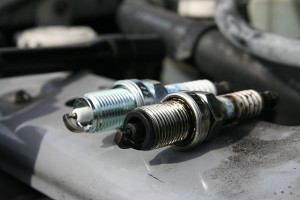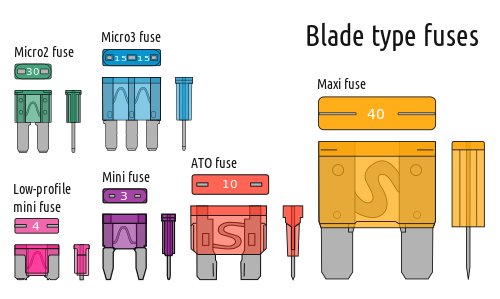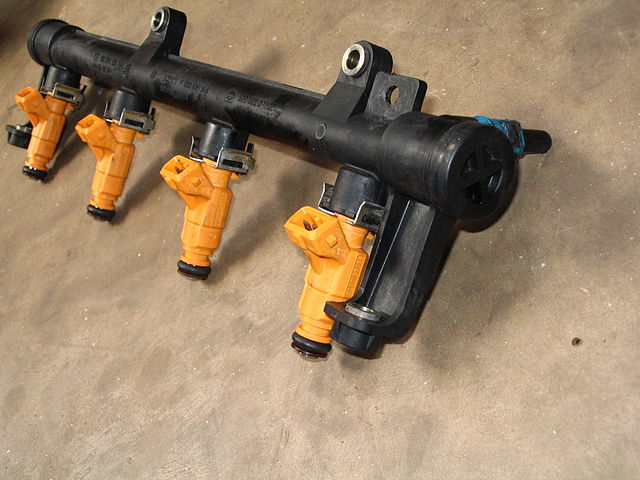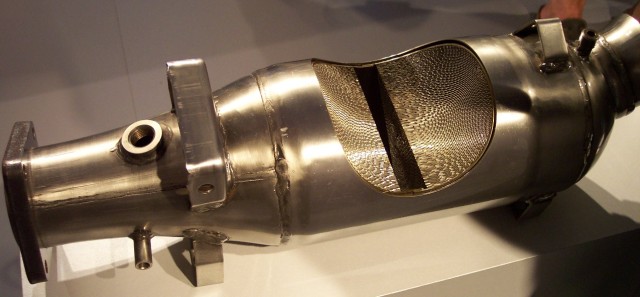What is a Spark Plug?
A spark plug is the device that is responsible for igniting the air/fuel mixture in spark-ignited internal combustion engines. There are a few different types of spark plugs, but they all share the same general design characteristics with a threaded shell and two electrically isolated electrodes. When a large current is applied to the central electrode, a spark jumps across the gap between it and the grounded electrode or electrodes. That spark is what ignites the air/fuel mixture.
Contents
History of the Spark Plug
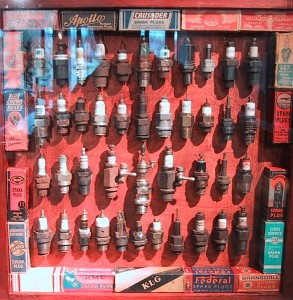
Spark plugs have gone through a number of changes throughout the years, but the basic design has remained the same.
The very first spark plug was invented in 1860 by Belgian engineer Etienne Lenoir for use in the internal combustion engine that he also designed. Lenoir’s engine was the first commercially successful internal combustion engine, so he is typically given credit for the invention of this component. However, a number of innovations and patents over the course of the next several decades led to the development of what we would consider the modern spark plug.
In the last few years of the 19th century, a number of inventors registered for their own spark plug patents. Nikola Tesla, Frederick Simms, and Robert Bosch all developed their own spark plug designs around this time. However, it was Gottlob Honold, working for Bosch, who invented the first high voltage plug that was designed for use in a magneto ignition system.
Spark Plug Design
Although there are a number of different types of spark plugs, they all share some of the same basic design elements. A typical spark plug includes:
- A terminal
- An insulator
- A metal case
- Seals
- A central electrode
- One or more side electrodes
The terminal is the part of a spark plug that allows it to be connected to the ignition system. This is the component that plugs into a spark plug wire, and it is also connected, through the center of the spark plug, to the central electrode.
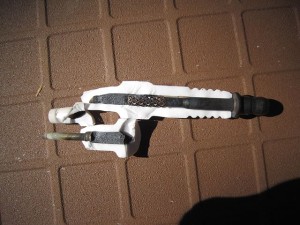
The main body of a spark plug is made up of a porcelain insulator with an electrode passing through it.
Much of the structure of a spark plug is made up of a porcelain insulator, which is designed to isolate the central electrode from the side electrode. This element extends all the way from the terminal to just prior to the tip of the central electrode, and it fits tightly into metal case.
The metal case of a spark plug serves two function, in that it is the element that allows the spark plug to be screwed into the engine, and it also provides an electrical connection between the engine (ground) and the side terminal.
How do Spark Plugs Work?
In spark-ignited internal combustion engines, high voltage is generated by either a magneto or an ignition coil during the compression stroke of each piston. Current is unable to flow due to the fact that the air/fuel mixture in the combustion chamber acts as an insulator, but the voltage is ultimately able to overcome that. This extremely high voltage is able to ionize the gasses in the combustion chamber, which allows current to flow between the spark plug’s side electrode and center electrode.
When current flows across the gap between the electrodes, this “spark” is what ignites the air/fuel mixture. The ionized gas between the electrodes, which acts as a conductor, becomes extremely hot. As the ionized gas heats up, it expands, which causes the air/fuel mixture in the immediate vicinity of the spark plug gap to ignite. That in turn ignites the rest of the mixture, which drives the piston on its combustion stroke.
Spark Plug Heat Ranges
The heat range of a spark plug refers specifically to how hot the tip of the plug is during operation. A number of factors can affect whether a plug runs hot or cold, including the length of the insulator, and it is important for a plug to be in the right heat range for the vehicle that it is used in. If a plug runs too hot, it may cause pre-ignition, and if it is too cold, deposits will tend to form on the tip.
Older vehicles have a little bit more leeway where heat range is concerned than newer vehicles. In older vehicles, it is typically possible to install a hotter or colder plug based on how the vehicle is driven and the condition of the engine. In newer vehicles, computer controls have made that practice more or less obsolete.
Spark Plug Gap
Spark plugs are typically adjustable in that the gap, or distance between the electrodes, can be set manually. This allows a single spark plug to be used in multiple engines, and it means that it is always very important to check and set the gap before installing a new set of plugs. If the gap is properly set when plugs are installed, it is possible to check them later to determine roughly how long they’ve been in use and when they might need to be replaced.
Sealing the Combustion Chamber
Since a spark plug has to protrude into a combustion chamber in order to do its job, it also has to seal that combustion chamber. This is typically accomplished via:
- a single use metal washer
- a tapered plug seat
If a spark plug isn’t properly sealed or seated, hot combustion gasses can escape past the threads. That can damage the spark plug, other components, or even cause the spark plug to eventually work its way out of the engine.
Spark Plug Failure
Spark plugs can fail for a number of reasons, all of which require replacing the plug. However, there may also be an underlying factor that caused the failure that should also be taken care of at the same time. In order to determine the cause of a spark plug failure, it’s important to be able to “read” the plug to determine what caused it to fail.
When a spark plug simply wears out, the center electrode will be worn down evenly, there will be a minimal amount of deposits, and there will be little to no discoloration. If there are deposits, the gap is bridged, or there is any damage to the electrodes or insulator, then other causes must be examined.

